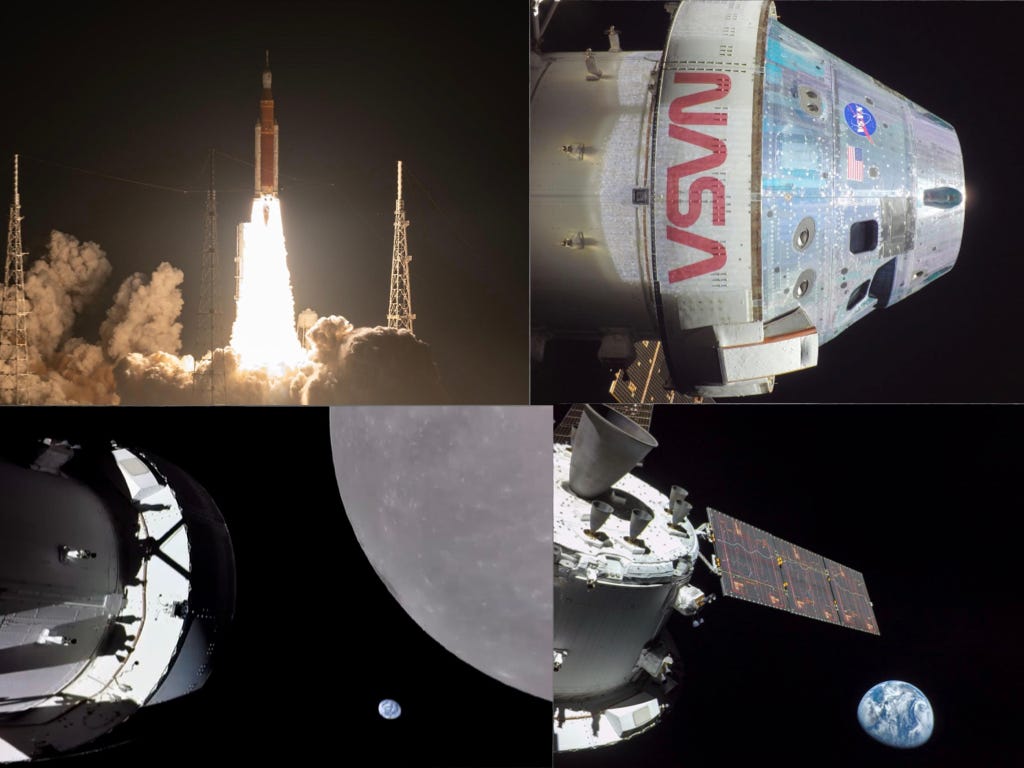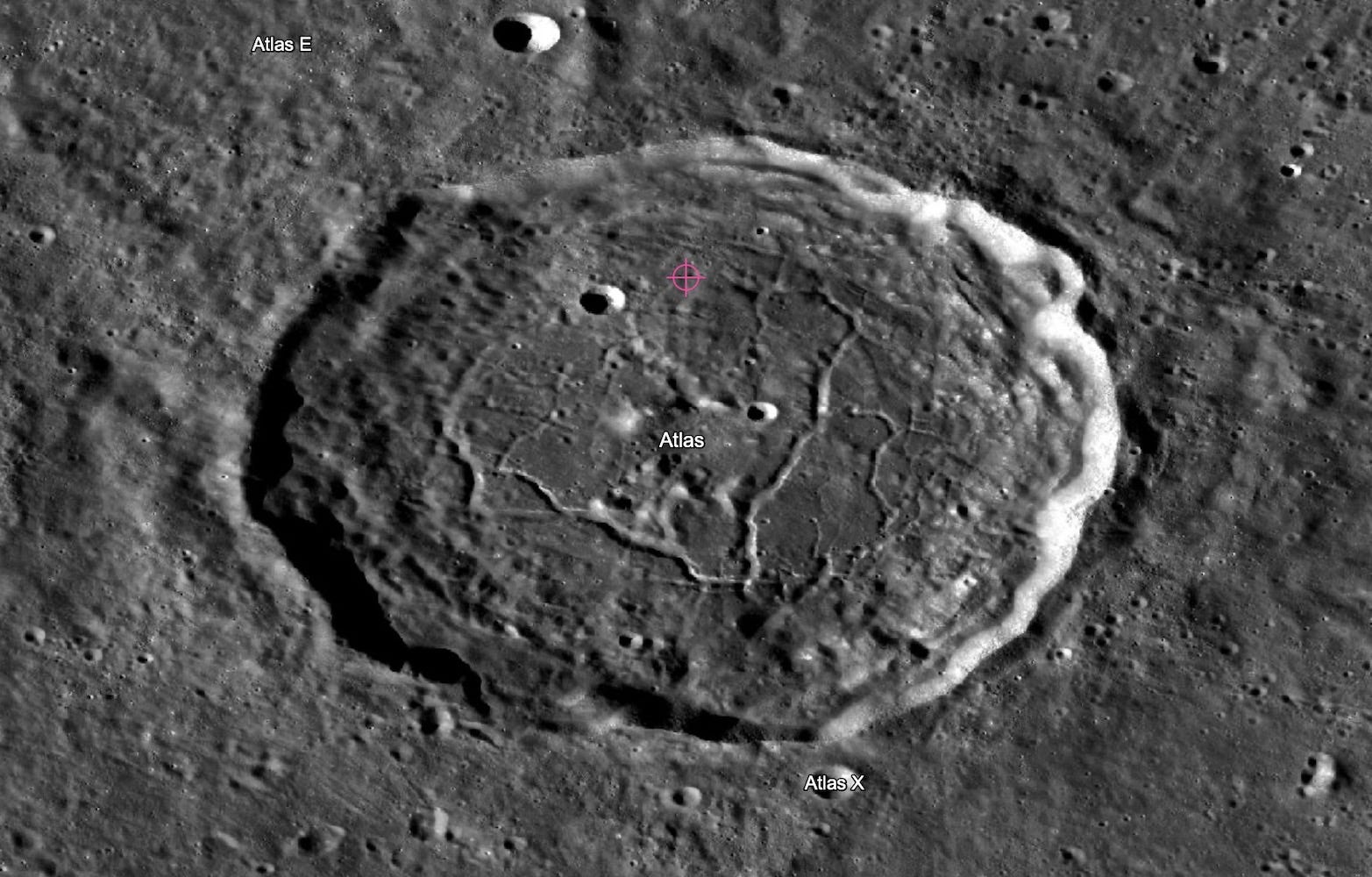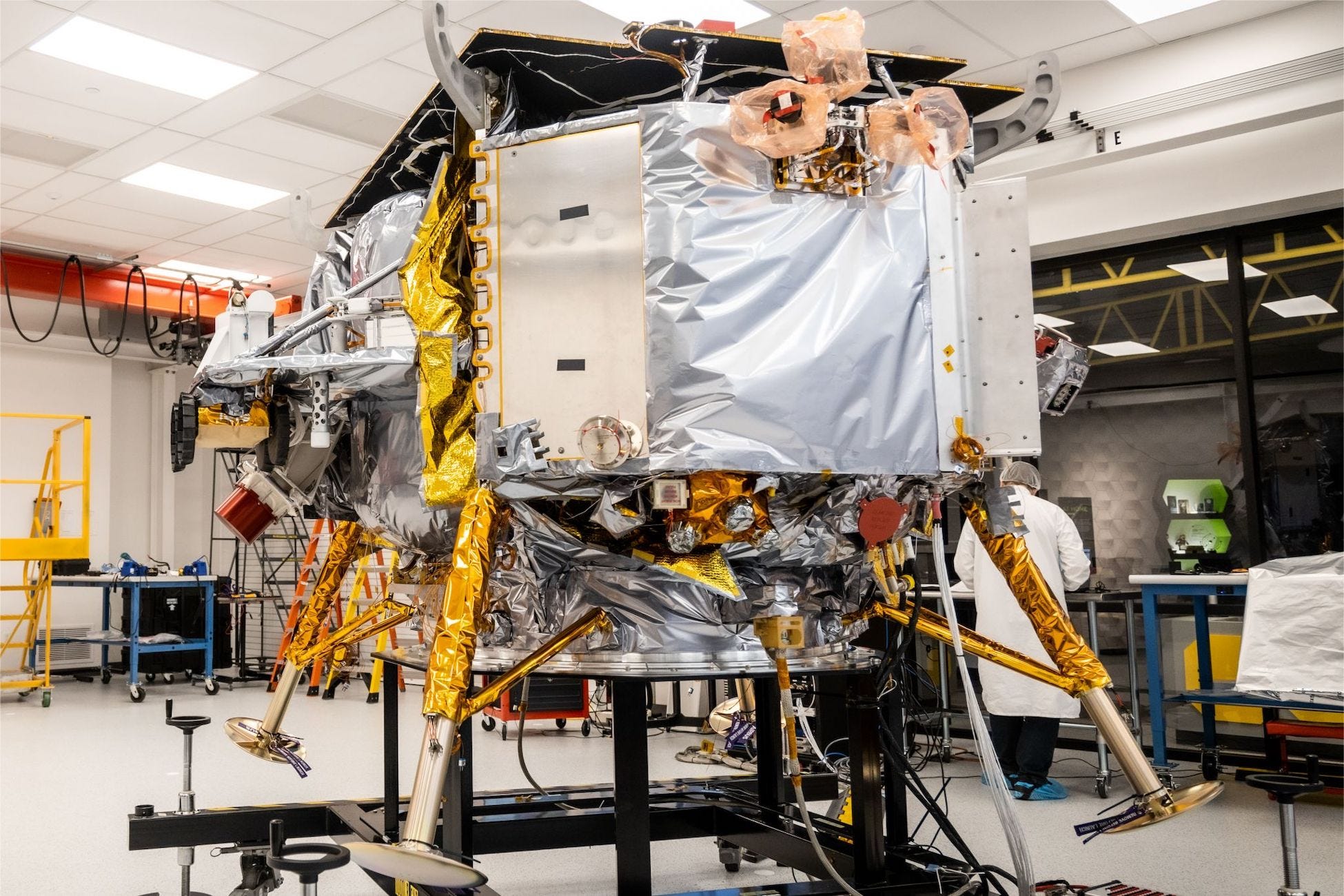Moon Monday #104: Reflecting on Artemis I and our future at Luna, a robotic lander launch, new lunar contracts and mission updates
Artemis I launches the world’s ambitions and hopes for the Moon
In a collective sigh of relief felt across the global space community, NASA finally launched the 1.6-million-kilogram SLS rocket on November 16, perfectly per the post-liftoff timeline, setting in motion the historic Artemis I mission to send an uncrewed Orion spacecraft on a 25.5-day deep space journey around the Moon and back. After Orion separated from the second stage, the latter deployed 10 CubeSats to be on their independent science & technology missions.
Today Orion flew 130 kilometers above the Moon’s farside at its closest, just before which it precisely propelled itself using its Europe-built propulsion and service module to target getting into its desired highly stable Distant Retrograde Orbit (DRO) around the Moon. After a final engine burn on November 25 to enter orbit, Orion will circle our cosmic neighbor for about a week at an unconventionally high altitude of roughly 64,000 kilometers.

Make no mistake, Artemis I is a monumental launch of hardware and hope. If its $4.1 billion hardware is successful at achieving all mission objectives, including the fiery bounced atmospheric reentry, the stage will be ripe for NASA to send humans around the Moon with Artemis II in 2024 followed by a crewed surface landing mid-decade with Artemis III, both monumental feats lost since Apollo.
Despite its controversial, nearly $50-billion embodiment as uncannily old-looking SLS, Orion and related systems bound by law, Artemis I is a key foundational technology stack NASA will use for ferrying future lunar astronauts through this decade and next. Rather, it’s precisely because of said embodiment that the U.S. Congress backs the Artemis campaign, giving us all an otherwise modern deep space exploration program and our first hope of extending humanity’s reach in space for non-fleeting moments.
Since Artemis I is among the most well-covered space missions to date, including by NASA itself, it’s unnecessary for me to delve into specifics beyond the summary and perspectives above so I’ll instead close this section with a few lesser known tidbits and some interesting reading.
- In addition to using the Deep Space Network (DSN) as usual, NASA is also utilizing relays and satellites of its Near Space Network for Artemis I to supplement and fill in transitions between the DSN’s changing availability. Further, if communications are lost during the mission, Orion can autonomously navigate and return home by repeatedly imaging the Moon and Earth, a technology derived from the International Space Station.
- Artemis I Mission Control overview
- Nice technical details on ESM by NASASpaceflight
- Fun with serious SLS rocket headlines
- List of secondary objectives for Orion, several of which NASA has progressed through already
- Great op-ed: Make each of the sporadic Artemis launches a celebration and recommitment
Statuses of secondary Artemis I payloads
Doug Messier provided statuses of the 10 Artemis I CubeSats:
6 CubeSats are operational: LunaH-Map, Lunar IceCube, ArgoMoon, BioSentinel, CuSP and EQUULEUS. They were able to retain sufficient charge to boot and deploy solar arrays. (ArgoMoon beamed back nice pictures of Earth and our Moon.)
There is a weaker than expected signal from LunIR.
Sadly, there has been no contact yet with NEA Scout and Team Miles.
The OMOTENASHI team shared today that due to no communications with the spacecraft they can’t execute the semi-soft landing. They have one final chance tonight for a non-ideal lunar free fall attempt so let’s hope at least that works. :(
The Callisto system inside Orion has been activated, which is a video-conferencing and voice assistant technology demonstration from Lockheed Martin, Cisco and Amazon that could assist future Artemis astronauts.
There hasn’t been any news so far on the status of the deep space radiation experiments onboard Orion.
It would be great if NASA’s near real-time Artemis I mission tracker web app included statuses of all these secondary missions as well. NASA’s otherwise excellent official Artemis blog has also been lacking in such updates.
A whole-hearted thank you to Moon Monday’s sponsors, whose support helps sustain this one-of-a-kind newsletter: Epsilon3, The Orbital Index and Open Lunar Foundation
ispace’s Moon lander to launch on November 28
ispace Japan is targeting November 28 for the launch of its first Moon landing mission on a SpaceX Falcon 9 rocket. The lander will be on a low-energy trajectory to the Moon, after four months of which it will enter lunar orbit and subsequently target landing in April 2023. The primary landing site lies within Atlas crater, at 47.5°N, 44.4°E (see on interactive map).

ispace also announced that they’ve secured the world’s first “Lunar Insurance” policy via MSI, which covers mission risks from launch through landing and surface operations. While the insurance doesn’t cover the onboard payloads, including UAE’s Rashid rover, it’s still a great step as private companies and space agencies globally increasingly mount lander, orbiter, and rover missions to our Moon.
Lifting off alongside the lander is NASA’s Lunar Flashlight CubeSat orbiter, which will help identify locations and abundances of water ice on the Moon’s south pole.
Strengthening Japan’s contributions to Artemis
The U.S. and Japan formalized their previous intention that NASA will provide an astronaut seat to JAXA on the NASA-led international Gateway lunar station in a future Artemis mission. The agencies are also considering having a Japanese astronaut land on the Moon by end of decade. JAXA is set to recruit new astronaut candidates later this year, a couple of which might visit the Moon.
In return for getting seats for Japanese astronauts, JAXA will provide critical life support systems and infrastructure components to the station’s International Habitation module (i-HAB), which includes space for crew to live, work, and conduct research in. Moreover, Japan is developing the advanced HTV-X(G) spacecraft to supply cargo to the Gateway starting no later than 2030. These capabilities will allow the station to sustain crewed and uncrewed operations for long periods.
Canada has a similar arrangement with NASA to get one seat on Gateway and one on Artemis II for Canadian astronauts in return for the country providing the Gateway’s highly autonomous Canadarm3 robotic servicing system. Similarly, Europe has bagged at least 3 Gateway seats for their astronauts in return for ESA contributing the Orion spacecraft’s critical service module and Gateway’s ESPRIT communications and refueling module.
More Moon

- Earlier this month South Korea’s KPLO spacecraft, on its way to the Moon, successfully demonstrated a kind of space internet that’s resistant to disruptions in communications. KPLO sent media files, including popular South Korean band BTS’ music video, from more than 1.2 million kilometers away.
- Astrobotic has completed assembling their first Moon lander, part of NASA’s CLPS program. The lander is now headed for space environmental tests to ensure its functioning during launch, in space, and on the Moon. If the lander aces the extensive tests, Astrobotic intends to launch it in Q1 2023.
- As part of the $150 million LEAP initiative, Canada is awarding $43 million to Canadensys to develop the country’s first lunar rover, which will launch to the Moon’s south pole on a NASA-funded CLPS lander in 2026. The rugged rover will carry six payloads, chiefly to study water ice, and be able to enter permanently shadowed regions for up to an hour as well as survive frigid lunar nights.
- NASA awarded an extended $1.15 billion contract to SpaceX, which calls for the company’s Lunar Starship to land astronauts on the Moon for Artemis IV in addition to Artemis III. The former will involve an upgraded Lunar Starship carrying 4 astronauts to the surface, as opposed to 2 on Artemis III, and could include surface stays of at least 33 Earth days, compared to the 7 on Artemis III. As previously discussed, Artemis IV including a Moon landing is a much bigger deal than it may seem despite any delays.
- A reminder that I regularly update information on upcoming Moon missions as evergreen pages on my blog. The latest of these are upcoming lunar rovers and NASA CLPS lunar landers.
One issue with our grand return to the Moon is that I’m too excited nearly all the time. Constantly writing about it doesn’t help.
→ Browse the Blog | About | Donate ♡
